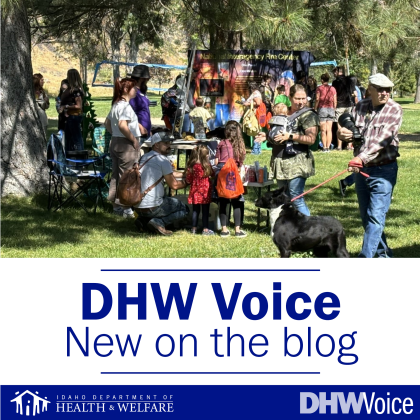Crisis prevention training paying off for SWITC; new video helps residents and families get oriented
Crisis prevention training is paying off for staff and residents at the Nampa-based Southwest Idaho Treatment Center (SWITC), a department-run home for adults with intellectual disabilities.
Since 2019, SWITC has used programming from the Crisis Prevention Institute (CPI) to implement tailored training across the facility, providing all staff with proactive de-escalation skills to recognize and prevent incidents of violence. SWITC was featured in September in a CPI case study showcasing its success.
Facing lost work hours due to staff injuries and increased spending from workers’ compensation claims, SWITC needed a sustainable training solution that would encompass all staff roles and scenarios they experienced.
The training is paying off.
SWITC has experienced a 65% decrease in workers’ compensation claims, 75% fewer work hours lost due to injury, and a 66% reduction in the use of restraints. Gaining de-escalation techniques specific to client behaviors has allowed SWITC to strengthen rapport clients.
Since implementing Crisis Prevention Institute programming, SWITC has trained more than 450 employees and embedded seven certified instructors across the facility.
It has also created operational cost savings.
“The investment in CPI training has helped us retain staff because they feel equipped with the tools they need,” said SWITC Administrative Director Jamie Newton. “When staff know what to do in a crisis situation and have the support they need, they’re more likely to stay.”
- Read SWITC’s Crisis Prevention Institute case study here: https://www.crisisprevention.com/customer-success-stories/human-services/southwest-idaho-treatment-center/
New video helps SWITC residents and their families get oriented
A new DHW video called “Discover the Southwest Idaho Treatment Center: A Campus Overview” is designed to help residents and their families get acquainted with the facility.
The video offers a visual tour of the 600-acre campus while a narrator explains about SWITC’s purpose and how it serves Idahoans.
“Many times, clients arrive to live at SWITC having never visited prior to moving in,” Newton said. “We’re excited to have this video to share with prospective clients and their families so that they can learn a bit more about SWITC and what to expect before they arrive. It is our desire to make the transition as positive an experience as it can be.”
- Check out the new video: “Discover the Southwest Idaho Treatment Center: A Campus Overview.”







Join the Discussion
Please note the following terms of participation in commenting on the DHW Voice blog.
To ensure a productive discussion you agree to post only comments directly related to this post and to refrain from posting obscenities; threatening, abusive or discriminatory language; sexually explicit material; and other material that would violate the law if published here; promotional content; or private information such as phone numbers or addresses. DHW reserves the right to screen and remove inappropriate comments.